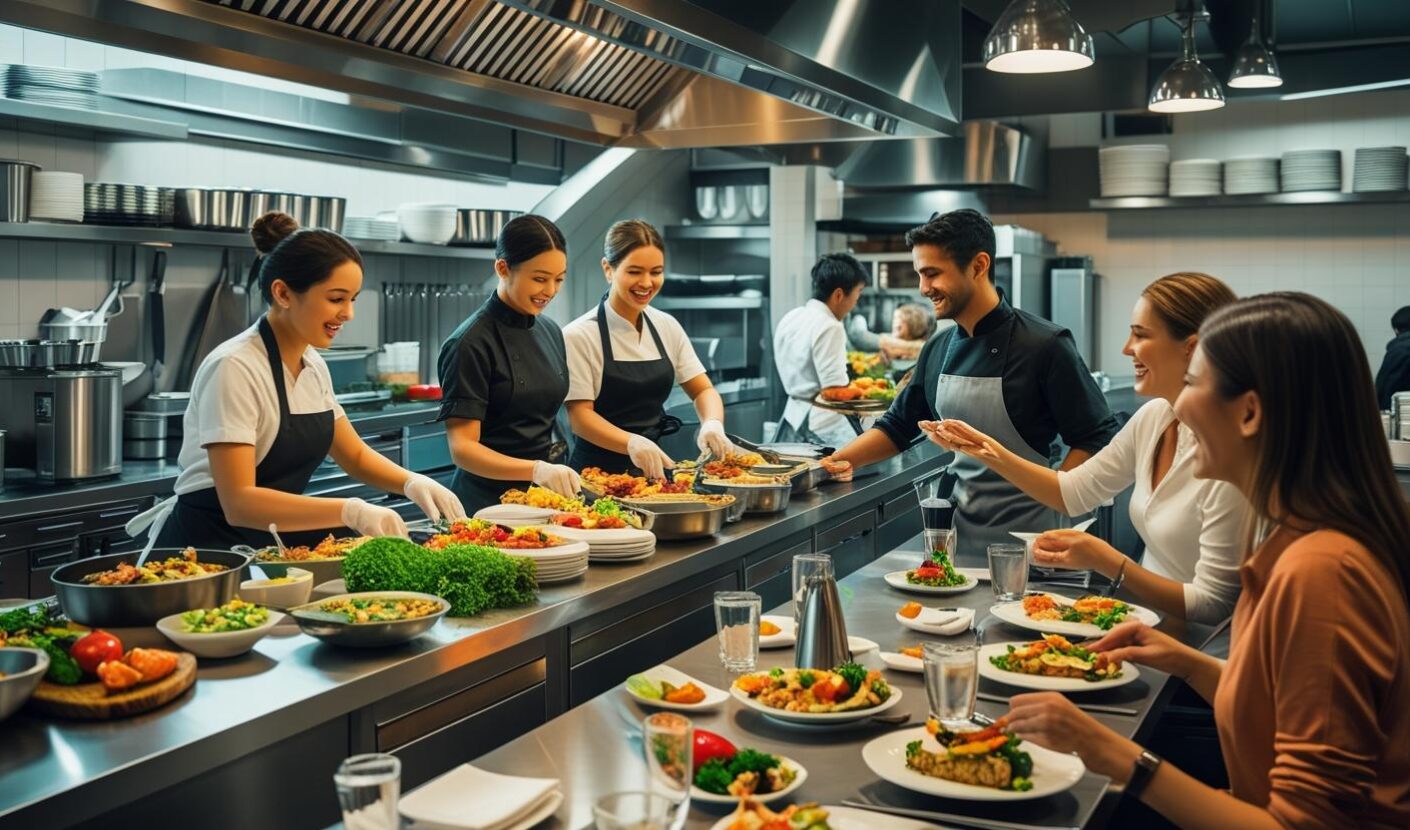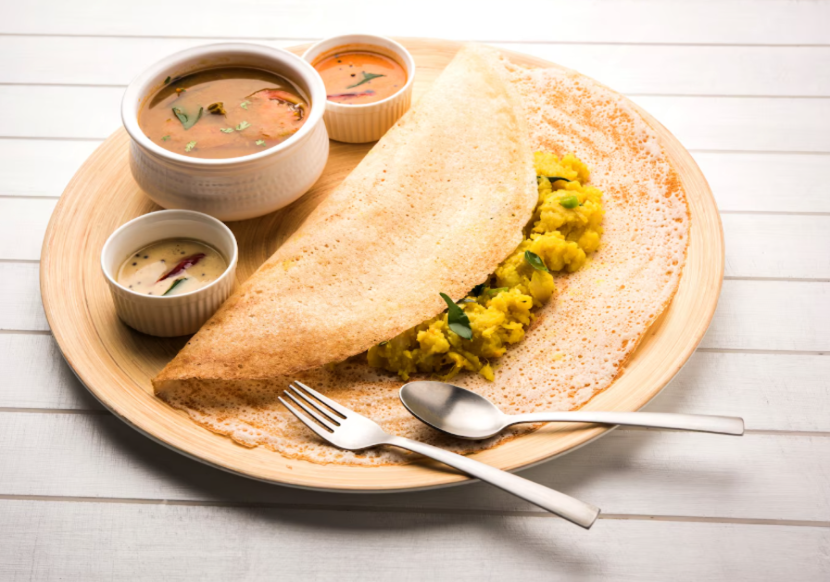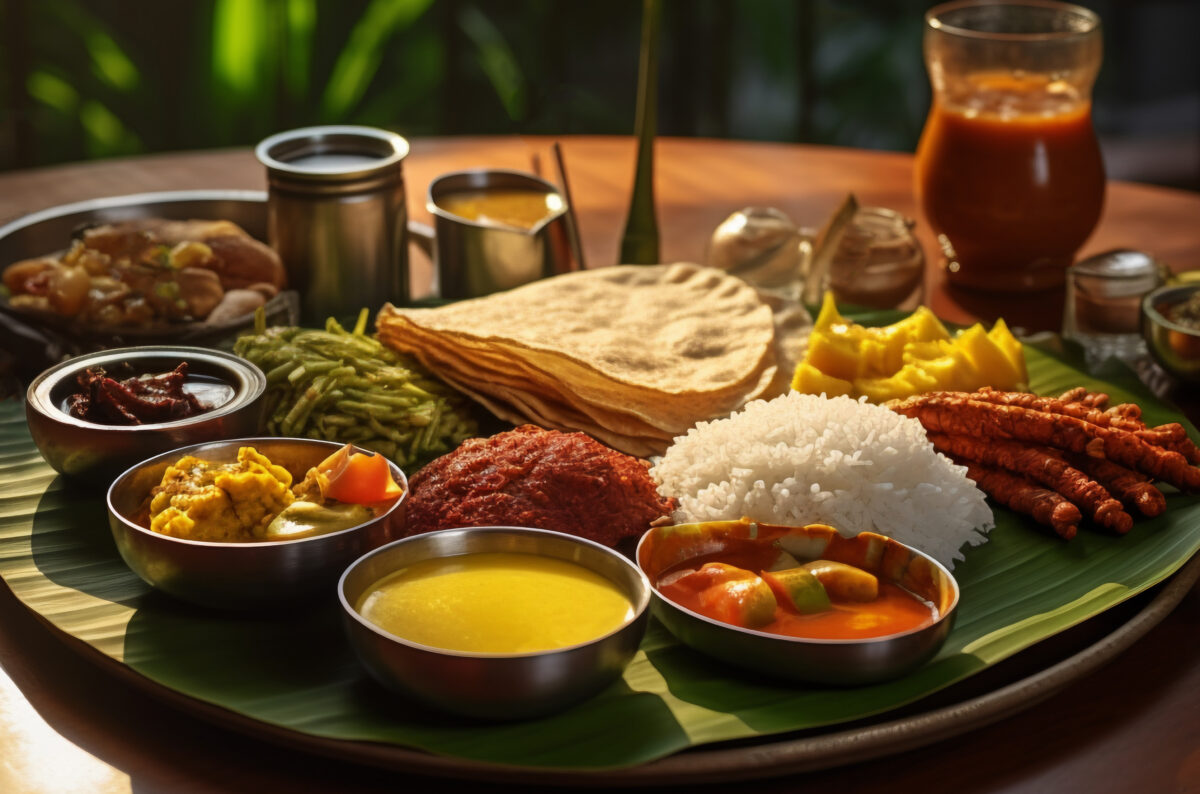
- August 1, 2025
How to Run a Successful Food Business: A Step-by-Step Guide to Turning Passion into Profit
If you’re asking how to run a successful food business, the answer begins with strategic planning, customer insight, and flawless execution. Today’s food industry is bursting with opportunities, but standing out requires more than just great recipes. You need a business mindset and the right systems in place.
This guide is tailored for aspiring restaurateurs, cloud kitchen owners, and franchise seekers who want to understand how to run a successful food business — especially in India’s evolving and competitive culinary landscape. You’ll learn how to take your passion from the kitchen to the commercial world, covering every stage from concept to scale, including food startup success tips, kitchen management practices, and marketing strategies.
Why the Food Business is Booming (But Fiercely Competitive)
The global food and beverage industry is expected to reach $5.4 trillion by 2030. In India, this boom is evident in every tier — from premium cafes to budget-friendly vegetarian restaurants. With rising disposable incomes, urban lifestyles, and growing interest in regional cuisines, now is a prime time to learn how to run a successful food business.
But with high opportunity comes high competition. Nearly 90% of food startups fail due to poor planning, mismanagement, or underestimating the market. The food industry has evolved into a battle of innovation, operational efficiency, and strong branding. Food startup success depends not just on good food, but also on execution, compliance, and consistency.
If you’re serious about discovering how to run a successful food business, you need a step-by-step roadmap. Let’s dive in.
Step-by-Step Blueprint: How to Run a Successful Food Business
1. Validate Your Idea and Define Your Concept
Understanding your niche is the first step in learning how to run a successful food business. Do you want to serve authentic South Indian vegetarian food, modern fusion dishes, or healthy meal bowls?
Your concept must answer these core questions:
- What makes your food different?
- Who is your target audience?
- What format suits your vision — dine-in, takeaway, cloud kitchen, or food truck?
Food startup success starts with identifying a clear need in the market and offering a product that fills it uniquely.
2. Create a Rock-Solid Business Plan
No matter how passionate you are, your food business needs a well-documented plan. This plan is your map — it helps you stay on course and attract investors or partners.
Your business plan should include:
- Executive summary of your concept
- Detailed market research and competitor analysis
- Pricing, menu structure, and customer segments
- Funding and cost breakdowns
- Staff structure and hiring approach
- Long-term expansion strategy
A solid plan is a foundational element in figuring out how to run a successful food business, especially in a competitive environment.
For more insights, check out how to start a South Indian restaurant.
3. Secure Funding and Build a Lean Cost Structure
Once your idea is validated and your business plan is clear, it’s time to gather funding. Many food entrepreneurs underestimate how capital-intensive operations can become. Without smart financial planning, you risk running out of funds early — one of the biggest reasons food businesses shut down.
Funding options include:
- Personal savings or bootstrapping
- Friends and family support
- Angel investors or venture capital
- Crowdfunding campaigns
- Government startup schemes
To run a successful food business, build a lean cost structure — minimize unnecessary expenses and start with a scalable model that grows with demand. Explore food franchise options under ₹10 lakhs for low-investment ideas.
4. Choose the Right Location and Optimize the Layout
Location plays a major role in how to run a successful food business. High visibility, accessibility, and proximity to your customer base are key.
Key factors when choosing a location:
- Footfall and parking availability
- Delivery radius (if offering online ordering)
- Competition nearby
- Rent affordability vs. expected revenue
For cloud kitchens, focus on delivery hotspots rather than foot traffic. Also, plan a kitchen layout that enables smooth workflow — this is where kitchen management principles come into play. An efficient kitchen layout increases productivity, reduces errors, and helps maintain food quality.
Kitchen Management: The Heart of a Successful Food Business
5. Set Up Strong Kitchen Management Systems
Ask any expert how to run a successful food business, and they’ll tell you that the kitchen is the heart of it all. Without proper kitchen management, even the best recipes will fail to delight consistently.
Here’s what efficient kitchen management includes:
- Organizing workstations for speed and hygiene
- Daily inventory tracking to prevent waste
- Standardizing recipes for consistency
- Regular deep cleaning and maintenance
- Pre-service preparation schedules
Proper kitchen management ensures that your team is always ready, your ingredients are always fresh, and your output is always high quality.
6. Build Strong Supplier Relationships and Ingredient Standards
Sourcing the right ingredients can make or break your menu. To run a successful food business, you need dependable suppliers and defined quality benchmarks.
Key sourcing strategies:
- Choose local suppliers for fresher ingredients and lower transport costs
- Build relationships for priority delivery and better pricing
- Ensure compliance with food safety standards
- Always keep a backup supplier for emergencies
Great dishes come from great ingredients. For ideas, explore traditional South Indian food concepts and lunch menu inspirations.
Navigating Legal & Compliance Requirements
7. Obtain All Licenses and Comply with Regulations
Many new business owners fail to understand that how to run a successful food business also includes handling licenses and regulations. Operating without the proper paperwork can lead to heavy penalties and even closure.
Important licenses for Indian food businesses:
- FSSAI License (mandatory for all food businesses)
- GST Registration
- Local Municipal Health Permits
- Fire and Safety Certification
- Shops & Establishments License
Start the licensing process early and consult a legal advisor if necessary. Compliance builds customer trust and ensures smooth operation. Review our guide on how much it costs to open a restaurant in India.
Build a Magnetic Brand and Reach the Right Customers
8. Focus on Brand Identity and Customer Experience
Your brand is more than a name or logo—it’s the feeling your customers take home. Successful food businesses are built on strong emotional connections and cultural storytelling.
Branding tips:
- Choose a memorable name that reflects your concept
- Design a logo and theme that aligns with your cuisine
- Create a compelling story behind your food
- Deliver outstanding customer service and ambiance
For example, Mysore Aduge connects with customers through its authentic South Indian heritage and vegetarian cuisine, offering more than just food—it offers experience.
9. Master Restaurant Marketing Strategies
No matter how good your food is, if people don’t know about it, your business won’t thrive. Marketing is essential in learning how to run a successful food business.
Key restaurant marketing strategies:
- Build a fast, mobile-friendly website with your menu and location
- Use Instagram, Facebook, and Google My Business to promote daily
- Partner with food bloggers and local influencers
- Offer loyalty programs and referral discounts
- Encourage reviews on Zomato, Swiggy, and Google
Marketing creates visibility, builds reputation, and drives repeat business — all critical elements in your path to food startup success.
Growth & Expansion
10. Scale Smartly: Franchising and Multi-Outlet Strategy
Once your operations are running smoothly, the next step is to scale. But expanding without control can quickly dilute your brand and quality. Learn how to run a successful food business at scale by building robust systems.
Consider franchising if:
- You’ve mastered standard operating procedures
- Your brand is strong and easily replicable
- You have backend support to offer new partners
Mysore Aduge offers franchisees training, kitchen setup support, and branding guidance—all crucial in running a successful and consistent food business across multiple locations.
Common Mistakes That Kill Food Businesses (and How to Avoid Them)
To truly understand how to run a successful food business, you must learn what not to do:
- Starting without market research
- Ignoring customer feedback
- Poor kitchen management practices
- No marketing plan or weak online presence
- Overextending too soon
- Hiring untrained or unmotivated staff
Awareness of these mistakes gives you a head start and sets you apart from others who jump in without preparation.
Franchise with Mysore Aduge
If you’re looking for a heritage-driven, vegetarian franchise that makes it easy to start and scale, Mysore Aduge is your answer.
We offer:
- Authentic, time-tested South Indian recipes
- Complete training and operational support
- Strong brand presence and marketing assistance
- Proven kitchen systems and franchise management
Start your journey with a brand rooted in culture and built for modern success.
Conclusion
Running a food business is one of the most rewarding yet challenging ventures you can pursue. But passion alone won’t keep the lights on. You must combine it with strategy, consistency, and a sharp understanding of how to run a successful food business in the real world.
With the right approach, a strong brand, solid kitchen management, and effective marketing, food startup success is well within reach.
MysoreAduge offers a profitable food franchise in Pune, giving entrepreneurs a chance to bring authentic Karnataka cuisine to Maharashtra’s growing food scene. It also serves fresh, traditional delicacies through its popular South Indian restaurants in Vadodara, delighting diners with dosas, idlis, and vadas in a warm, welcoming atmosphere.
Frequently Asked Questions
Understand your market, obtain all necessary licenses, maintain food quality, manage your kitchen efficiently, and invest in branding and marketing. Start small and scale with proper systems in place.
It depends on the model. A food truck may start at ₹5–10 lakhs, while a dine-in restaurant could cost ₹20–50 lakhs.
FSSAI, GST, health permits, fire and safety certificates, and a local municipal license are all typically required.
Cloud kitchens, food trucks, and small QSR (quick service restaurant) outlets are great low-investment starting points.
Leverage social media, SEO, influencer collaborations, and Google Business profiles. Offline methods like sampling and referral programs also help.







